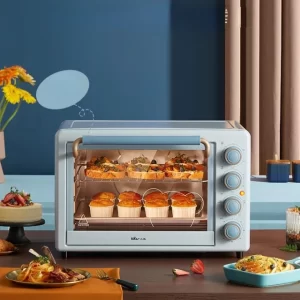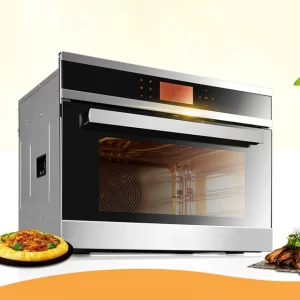How do pizza ovens work?
Introduction:
Pizza ovens are specially designed appliances that provide the optimal conditions for baking delicious pizzas. These ovens create high temperatures, even heat distribution, and a unique cooking environment to produce perfectly cooked and flavorful pizzas. In this article, we will explore how pizza ovens work, discussing their heating mechanisms, construction, and key factors that contribute to their performance. By understanding the inner workings of pizza ovens, users can achieve professional-quality pizza baking results in their own homes.
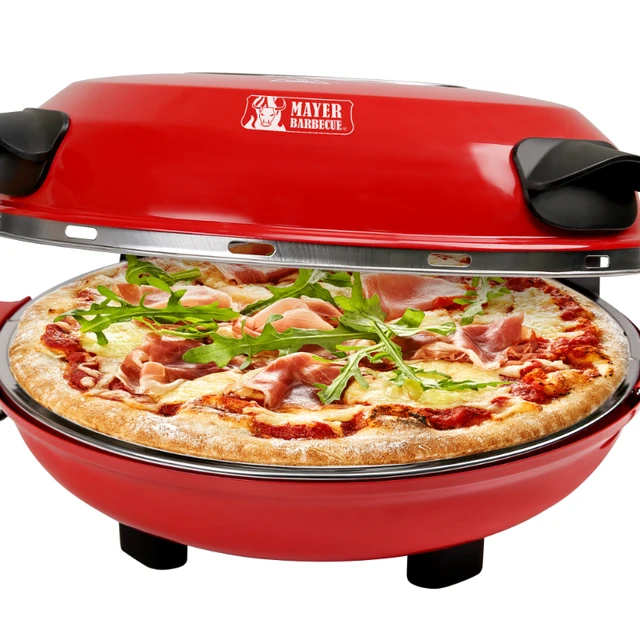
How do pizza ovens work?
Overview of Pizza Ovens:
a. Purpose: Pizza ovens are specifically designed for baking pizzas at high temperatures to achieve the desired crispy crust, melted cheese, and perfectly cooked toppings.
b. Types of Pizza Ovens: There are various types of pizza ovens available, including wood-fired ovens, gas ovens, electric ovens, and even outdoor brick ovens. Each type has its own unique characteristics and advantages.
Heating Mechanisms in Pizza Ovens:
a. Wood-Fired Pizza Ovens: Wood-fired pizza ovens use burning wood as their heat source. The wood is burned in a firebox or chamber, and the heat travels through the oven to cook the pizza. The burning wood creates radiant heat and imparts a distinct smoky flavor to the pizza.
b. Gas Pizza Ovens: Gas pizza ovens utilize natural gas or propane as their heat source.
c. Electric Pizza Ovens: Electric pizza ovens use electricity to generate heat. These ovens typically have heating elements, such as coils or infrared elements, located at the top and bottom of the oven cavity.
Construction of Pizza Ovens:
a. Insulation: Pizza ovens are constructed with insulation materials to retain heat and prevent heat loss. Insulation helps maintain high temperatures and promotes even heat distribution throughout the oven cavity.
b. Oven Dome: The shape of the oven dome is an important aspect of pizza ovens. The dome creates a convection effect, allowing heat to circulate and cook the pizza evenly. The dome shape also helps reflect heat back onto the pizza, promoting a crispy crust.
c. Oven Floor: The oven floor, often made of refractory materials like stone or clay, is where the pizza is placed for baking. The floor absorbs and radiates heat, cooking the pizza from the bottom and creating a crispy crust.
d. Ventilation: Pizza ovens require proper ventilation to release excess heat, smoke, and combustion byproducts.
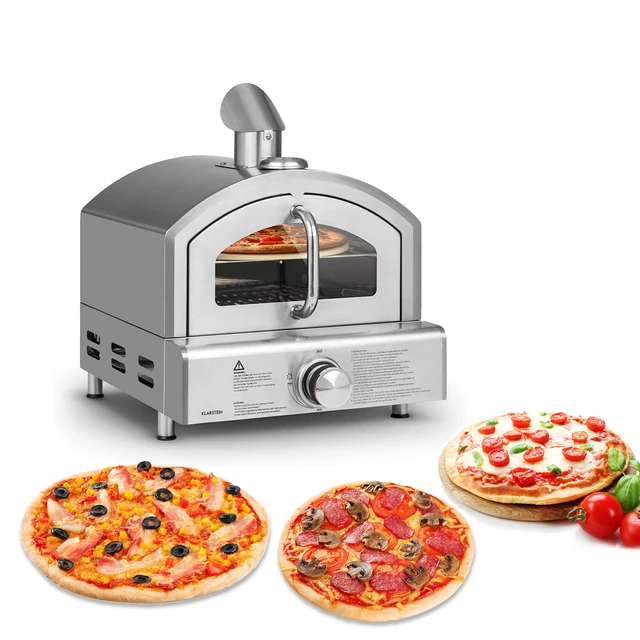
Key Factors Affecting Pizza Oven Performance:
a. Temperature: Pizza ovens typically reach high temperatures, ranging from 500°F to 900°F (260°C to 482°C). The high heat is crucial for achieving the desired pizza crust texture and caramelization of toppings.
b. Even Heat Distribution: Pizza ovens are designed to distribute heat evenly throughout the oven cavity. This ensures that the pizza cooks uniformly, with no hot spots or undercooked areas.
c. Cooking Time: Due to the high temperatures in pizza ovens, pizzas cook quickly, typically in only a few minutes. The short cooking time helps retain the freshness and flavors of the ingredients.
d. Moisture Management: Pizza ovens are designed to manage moisture during the baking process. The heat, ventilation, and construction materials help absorb excess moisture, preventing a soggy crust and ensuring a crispy exterior.
e. Wood-Fired Flavor: Wood-fired pizza ovens impart a unique smoky flavor to pizzas. The burning wood releases aromatic compounds that infuse the pizza, enhancing its overall taste and aroma.
f. Pizza Placement: Proper pizza placement is important in pizza ovens.
g. Rotating or Turning Pizzas: In some pizza ovens, rotating or turning the pizza during the cooking process helps achieve even browning and cooking on all sides.
Tips for Using Pizza Ovens:
a. Preheating: Preheat the pizza oven to the desired temperature before baking the pizza. This allows the oven to reach optimal heat levels and ensures consistent cooking results.
b. Pizza Peel: Use a pizza peel, a long-handled tool with a flat paddle, to transfer the pizza into and out of the oven. The peel allows for easy placement and removal of the pizza from the oven floor or pizza stone.
c. Monitoring the Pizza: Keep a close eye on the pizza while it is cooking in the oven. Due to the high temperatures, pizzas can cook quickly, and it is important to prevent burning or overcooking.
d. Practice and Experiment: Each pizza oven has its own unique characteristics, and it may take some practice to achieve the desired results. Experiment with different cooking techniques, temperatures, and ingredients to find the perfect combination for your pizzas.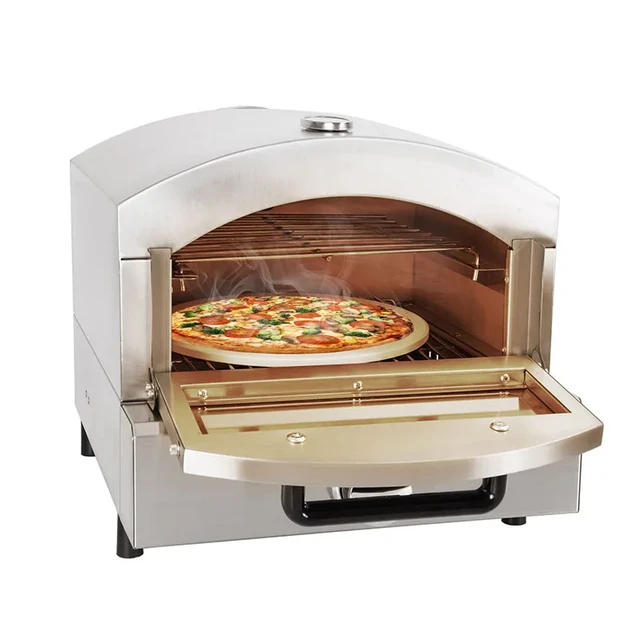
Cleaning and Maintenance of Pizza Ovens:
a. Regular Cleaning: Proper cleaning and maintenance of a pizza oven are essential for its longevity and optimal performance. After each use, remove any food debris or ash from the oven floor using a brush or scraper specifically designed for pizza ovens.
b. Ash Removal: For wood-fired pizza ovens, it is important to remove the ash buildup regularly to prevent it from affecting the taste of future pizzas. Allow the oven to cool completely, then use a shovel or brush to sweep out the ash.
c. Oven Door and Exterior: Clean the oven door and exterior surfaces with a damp cloth or sponge. Avoid using harsh chemicals or abrasive materials that may damage the oven’s finish.
d. Seasoning: Some pizza ovens, particularly those made of clay or stone, benefit from regular seasoning. Apply a thin layer of cooking oil to the oven floor and walls to create a natural non-stick surface and enhance the oven’s performance.
e. Professional Cleaning: For heavily soiled or difficult-to-clean pizza ovens, it may be necessary to seek professional cleaning services. These services can provide a deep clean and restoration of the oven’s interior and exterior surfaces.
Safety Considerations:
a. Heat and Burns: Pizza ovens reach extremely high temperatures, and caution should be exercised to avoid burns. Always use heat-resistant gloves or oven mitts when handling hot surfaces or removing pizzas from the oven.
b. Ventilation: Pizza ovens require proper ventilation to release heat, smoke, and combustion byproducts.
c. Gas Safety: If using a gas pizza oven, ensure that the gas supply is properly connected and that there are no leaks. If you suspect a gas leak, immediately turn off the gas supply and seek professional assistance.
d. Fire Safety: Pizza ovens, particularly wood-fired ovens, present a fire risk. Keep flammable materials away from the oven and maintain a clear area surrounding the oven to minimize the risk of accidental fires.
e. Children and Pets: Pizza ovens can pose a danger to children and pets due to their high temperatures.
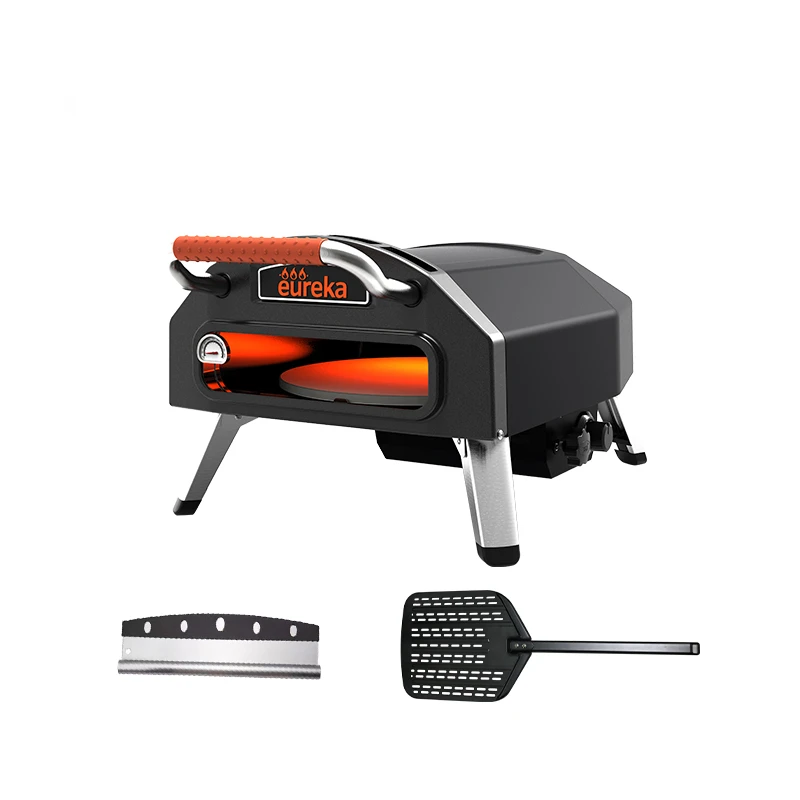
Pizza Oven Accessories and Tools:
a. Pizza Stones or Baking Stones: Pizza stones are popular accessories for pizza ovens as they help distribute heat evenly and create a crispier crust. They also absorb excess moisture, promoting a well-cooked pizza.
b. Pizza Peels: Pizza peels are long-handled tools with a flat paddle, used to transfer pizzas in and out of the oven. They are essential for safely maneuvering pizzas and placing them on the oven floor or pizza stone.
c. Infrared Thermometers: Infrared thermometers can be used to measure the temperature inside the pizza oven accurately. This allows for precise monitoring and control of the oven’s heat.
d. Brushes and Scrapers: Brushes and scrapers designed for pizza ovens are useful for cleaning the oven floor and removing food debris or ash buildup.
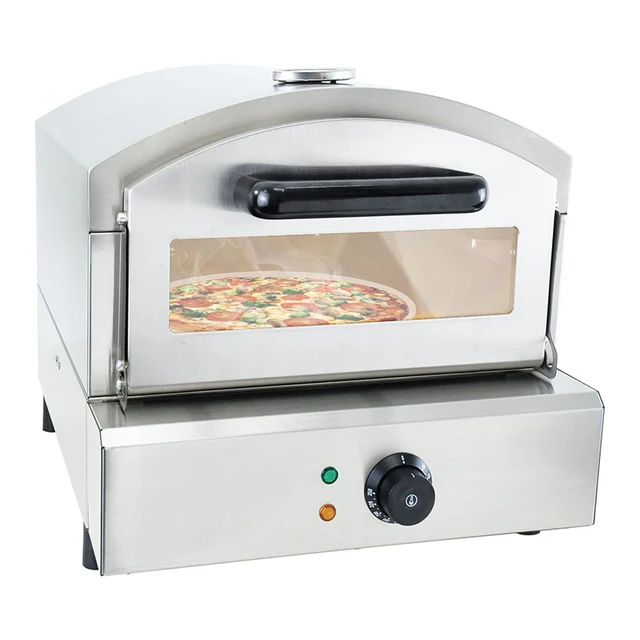
Conclusion:
Pizza ovens provide the optimal environment for baking delicious pizzas with crispy crusts and melted toppings. They utilize various heating mechanisms, such as wood-fired, gas, or electric, to generate high temperatures necessary for pizza baking. The construction of pizza ovens, including insulation, oven dome, and ventilation, contributes to their performance and even heat distribution. Key factors, such as temperature, even heat distribution, moisture management, and wood-fired flavor, play important roles in achieving excellent pizza results. By understanding how pizza ovens work and following proper techniques, users can enjoy professional-quality pizzas in the comfort of their own homes.
